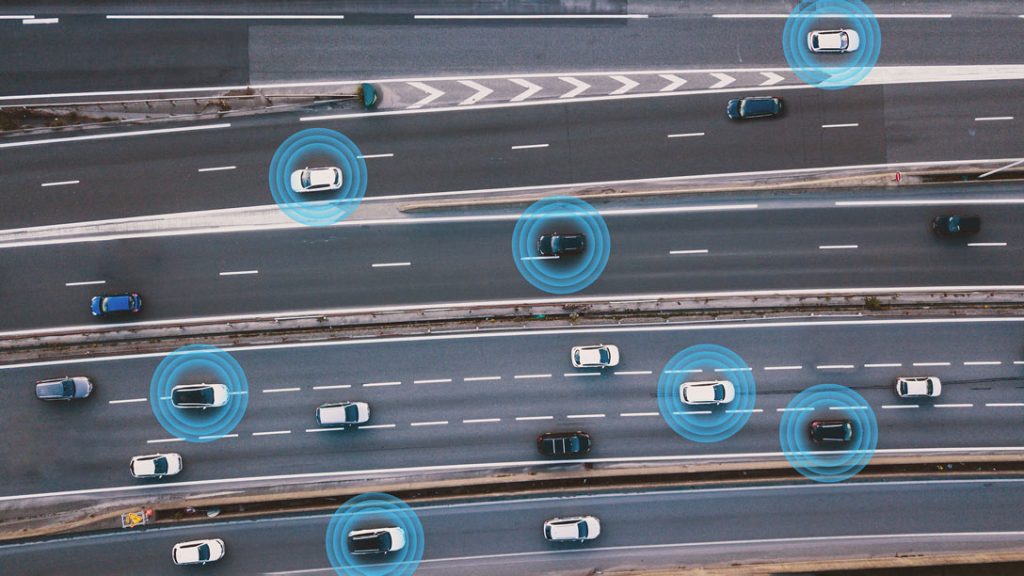Over the course of the year, this means more than 4.5 million fines for speeding, not wearing seat belts or engaging in risky behaviour, among other reasons.
Fleet vehicle drivers are one of the groups most likely to commit traffic offences which may result in fines, as they accumulate more hours behind the wheel than private users. These fines have a significant financial impact on companies’ annual balance sheets, but perhaps even more importantly, they mean that their drivers and vehicles have been exposed to certain safety risks and accidents which, in turn, can result in significant financial costs.
Telematics, in this respect, can be of great help to companies and fleet managers by providing real-time information on certain aspects of negligent or risky behaviour of their drivers, as well as detailed analysis of the performance of individual vehicles.
Data analysis on driver behaviour
According to data collected annually by the DGT, aggressive driving can multiply by up to 10 the possibility of suffering an accident in which casualties occur, and by up to 30 the risk of suffering an accident with serious injuries. This behaviour exponentially multiplies the risk of receiving a heavy fine:
- 200 euros, without deduction of points, for negligent driving.
- From 500 euros, six licence points and prison sentences, from two to five years, if the life of other road users has been endangered, in the case of reckless driving.
Although it is not always possible to effectively anticipate this type of behaviour if it is a one-off event, it is easier to detect certain patterns or habits in drivers that may pose a potential safety risk and, therefore, possible penalties.
Geotab has its driving behaviour report, which analyses various factors, such as whether the driver is wearing a seat belt correctly, whether there has been any speeding, speeding, braking or swerving, to provide an assessment of the level of risk posed to the company by that particular driver. This encourages healthy competition between drivers to see which is the safest and at the same time encourages good habits.
Once the company knows which drivers might be more likely to commit infringements or risks and in which areas, it is necessary to define an action plan. Personalised training plans can be designed to help raise awareness and knowledge of road safety issues, and even, if necessary, to correct these habits in real time by means of audible warnings and alerts aimed directly at the driver.
New Low Emission Zones and fines for older vehicles
In addition to possible fines for drivers’ risky habits and behaviour, in recent months penalties have become increasingly frequent when users of older, more polluting vehicles enter the new Low Emission Zones in large cities, following the entry into force of the Climate Change Law in Spain.
Although this measure will make the creation of Low Emission Zones (LEZs) mandatory in municipalities with more than 50,000 inhabitants from 2023, Madrid and Barcelona already have permanent zones with restrictions on the most polluting vehicles. Others, such as Valencia, Valladolid and Gijón, impose temporary restrictions on access to their urban centres when high pollution episodes occur.
As with traffic fines, telematics can be very useful for managers to avoid penalties for unauthorised access to EPZs, especially in cases where their fleet is made up of old or highly polluting vehicles, i.e. those that do not have the environmental label granted by the DGT.
Thanks to the solutions offered by Geotab, it is possible to design in advance the route to be followed by each vehicle according to the stops to be made during the day or to choose the type of vehicle to be used in each case if it is unavoidable to enter an EPZ. Thus, for example, the manager can decide that only electric vehicles will be used for last mile deliveries, while for those with a longer route or with destinations in the suburbs, combustion vehicles will be used, which would not be able to access the centre without a penalty.
In addition, Geotab also has its Electric Vehicle Adoption Report (EVSA), which helps managers to transition their fleets towards electrification to prevent being affected by any possible access restrictions in large cities. This tool assesses the use made of each vehicle (distance travelled, speed, hours of use, etc.) and identifies which vehicles could be effectively replaced by electric equivalents, and suggests which models currently available on the market would be most suitable in each case.
Simpler and more effective control over fines
Realistically, no company is completely out of the woods when it comes to traffic fines. Especially considering that the vast majority of fines are caused by ignorance or human error. That’s why having a system that works with the manager to keep track of those fines that are received can mean the difference between paying or appealing them on time or being hit with additional surcharges for late payment.
To make this task easier, Geotab has the Advanced File Analysis and Infringements (AFA) module, which offers the possibility of quickly and easily verifying whether any of the vehicles belonging to the fleet has been fined. In this way, the manager can make the right decisions in the management of penalties and thus not be exposed to additional costs.
In short, the telematics solutions offered by Geotab alone become a competitive advantage for companies, not only because of the possibility of avoiding or mitigating the effect of fines on the financial balance sheet, but also because of the other operational advantages they provide.






